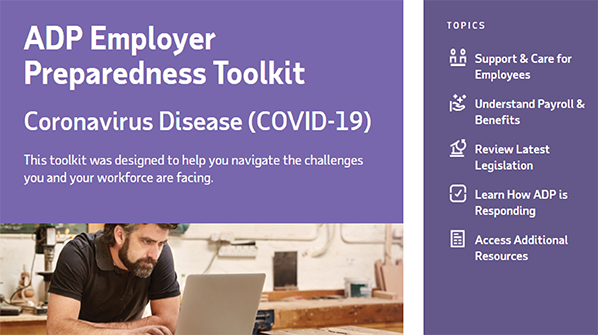The Government of Canada recently passed legislation that provides access to emergency measures for Canadian businesses to help manage the impact of the COVID-19 pandemic.
The Canada Emergency Wage Subsidy is intended to:
- Prevent further job loss
- Encourage businesses to re-hire workers they have laid off as a result of COVID-19
- Help businesses get ready to return to normal operations
What is the Canada Emergency Wage Subsidy?
An emergency measure originally designed to provide eligible Canadian businesses with the funds to pay up to 75% of current and new workers’ wages for up to 12 weeks retroactive to March 15, 2020, extended on May 15th for an additional 12 weeks to August 29th, 2020.
With the passing into law of Bill C-20, the CEWS is further extended to November 21, 2020, with significant revisions to the program and eligibility criteria.
How much is the proposed Canada Emergency Wage Subsidy?
PRE – JULY 5TH CEWS CALCULATION:
- the greater of the total amount for all eligible employees for each week in a qualifying period from:
- the lesser of:
- 75% of the employee’s eligible remuneration for that week,
- $847, and
- if the eligible employee is non-arm’s length, $0; and
- the lesser of:
- 100% of the employee’s eligible remuneration
- 75% of the employee's baseline remuneration, and
- $847.
- the lesser of:
- Minus, the amount the eligible employer was eligible to claim under the TWSE subsidy for the qualifying period;
- Minus, the total amounts received by eligible employees during the qualifying period as a work-sharing benefit program;
- Plus, for eligible employers paying employees on leave, they can also claim a 100% refund for certain employer-paid contributions to Employment Insurance, the Canada Pension Plan, the Quebec Pension Plan, and the Quebec Parental Insurance Plan.
POST JULY 5, 2020 CEWS CALCULATION
The CEWS amount that an eligible employer may claim for its eligible employees for each of the qualifying periods 5 through 9 (being July 5 – Aug. 1, 2020; Aug. 2 – Aug. 29, 2020; Aug.30 – Sept. 26, 2020; Sept. 27 – Oct. 24, 2020; Oct. 25 – Nov.21, 2020) will consist of 2 parts:
1) a base subsidy – available to all eligible employers that have experienced declines in revenue on a sliding scale basis, meaning that the base subsidy amount will be at a specified rate varying depending on the scale of revenue decline; and
2) a top-up subsidy of up to an additional 25% for employers most adversely affected by the pandemic.
- Each of the base subsidy and the top-up subsidy, as applicable, will be applied to the amount of eligible remuneration of up to $1,129 paid to an eligible employee per week.
- Note: For Periods 5 (July 5 – Aug. 1) and 6 (Aug. 2 – Aug. 29) a “safe harbor provision” has been built-in to ensure that eligible employers with a decline in revenue of 30% or more have access to a CEWS amount at least as generous as they would have had under the initial CEWS rules/program (pre-July 5th).
- A separate CEWS rate structure has also been developed to apply to “furloughed employees” (i.e., employees that are on leave with pay). The subsidy calculation in periods 5 and 6 remains the same as in periods 1 through 4. Starting in Period 7 (Aug. 30 – Sept. 26), the CEWS subsidy support for furloughed employees is adjusted to align with the benefits provided through the CERB and/or EI. This alignment is intended to ensure the equitable treatment of employees on furlough between both programs. In addition, together with the elimination of the 14-days rule, it will make it easier to transition employees from the CERB to the CEWS, in order to enable the workers to get reconnected with their employer.
Who is eligible for the Canada Emergency Wage Subsidy?
Eligible employers include all non-publicly funded businesses (individuals, taxable corporations, partnerships consisting of eligible employers, non profit organizations, registered charities, and any prescribed organizations who have:
Pre July 5, 2020 Qualification Criteria:
(a) experienced a decline in of at least 15% of their revenue in March 2020 and 30% in April or May 2020, as compared to either:
- The same month in 2019; or
- For businesses where the year-over-year compare is not possible (such as for a start-up), an average of their monthly revenues earned in January and February 2020 against those earned in March 2020;
- (b) a business number and related payroll account with the CRA on March 15, 2020;
- (c) paid salary, wages, or other remuneration to an eligible employee between March 15, 2020 and August 29, 2020; and
- (d) applied for the CEWS before October 1, 2020.
Eligible employers that have:
(a) experienced any revenue decline are eligible for the new base CEWS at a specified rate, applied to the amount of remuneration paid to the employee for the eligibility period, on remuneration of up to $1,129 per week, determine based on the level of change in their monthly revenues.
Regulations announced May 15th extended eligibility to the following groups:
- Partnerships that are up to 50% owned by non-eligible members;
- Indigenous government-owned corporations that are carrying on a business, as well as partnerships where the partners are Indigenous governments and eligible employers;
- Registered Canadian Amateur Athletic Associations;
- Registered Journalism Organizations; and
- Non-public educational and training institutions (for-profit and not-for-profit) that offer specialized services, such as arts schools, driving schools, language schools, culinary schools and flight schools.
Where can I find more information?
Updated: July 28, 2020



